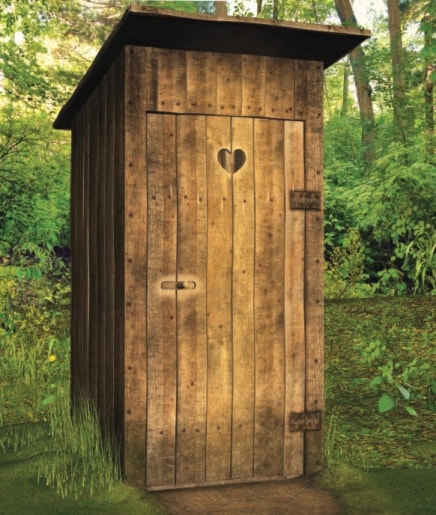HOWARD FREDEEN
The column this week will deal neither with people nor agriculture but will instead focus on an institution of the past, an icon of pioneer architecture that still exists in remote areas that have yet to benefit from the modern convenience of running water.
This institution has been commemorated in both literature and poetry of which the best-known item may be The Passing of the Backhouse, a poem from days of yore credited to James Whitcomb Riley.
‘When Grandpa had to “go out back” and make his morning call,
We’d bundle up the dear old man with muffler and a shawl.
I knew the hole on which he sat -- ‘twas padded all around,
And once I tried to sit there -- ‘twas all too wide I found,
My loins were too little, and I jack-knifed there to stay,
They had to come and get me out, or I’d have passed away,
My father said ambition was a thing that boys should shun,
That I should use the children’s hole ‘til childhood days were done.’
Yes those houses frequently had two holes, one adult size and the other for juniors, and an old Eaton’s catalogue would lie on the broad seat for use as required. In affluent settings the shiny pages of the catalogue were supplemented with newsprint. Once each year the delicate tissue wrappings found on the mandarin oranges might find their way to the backhouse. That was luxury beyond compare.
Old (very old) timers in Lacombe may remember the gems that used to stand at the very back of each town lot. They were always tempting targets for night time Halloween pranks. Pushing them over with the occupant inside or moving them backwards a foot or so to trap the unwary who had to make their way hastily to the little house in the dark of night ranked as great sport for the sadistically minded.
Occasionally the pranksters tipped a structure with a pipe-smoking occupant and got more got much more than they bargained for. The resulting conflagration would see them drafted into the volunteer fire department.
Nor were such fires restricted to Halloween. Pipe smoking adults cleaning the last embers from their morning pipe before rising to face the challenges of the day might inadvertently deposit some glowing embers to the depths.
And any youth attempting his first smoke in the seclusion of the little shanty might, in panic on hearing approaching footsteps, consign the evidence to the nether regions.
No doubt it was such an incident that inspired the old poem Oh shed a tear for Tommy McGuire who ran down the street with his pants on fire.
These gems were still functioning in Lacombe in the mid-1950s when the United Church held their Sunday school classes in the former Methodist church hall.
Students and teachers alike will never forget those frigid encounters on frosty winter mornings. Hotels had to provide a facility for occupation on more than one level. Lakeview hotel on Gull Lake reputedly provided a two-storey unit with two ‘closets’ mounted one above the other. Standalone units also featured a wide selection of designs and decorations with construction materials that ranged from wood to brick.
But none could compare in elegance with the unit I saw in the Red Lion Inn in Oxford. England in 1969; twin urinals standing over 6 ft. tall, a sink equally massive, and a toilet, all created in china featuring the famous Blue Willow pattern. I could not pass up the photo opportunity the scene offered and after snapping the picture I commented on the elegance to the porter. He responded “Yes, we’ve had a number of American visitors who want to take the whole unit home and place it alongside Queen Mary that they installed somewhere in the Arizona desert.”
For further information on the architectural splendor of the old-fashioned back house and the creativity of its builders search the Internet for the topic ‘Gems of American Architecture’. There is also a book copyright 1935 by Brown and Bigelow, St. Paul Minnesota Remembrance Marketing ™ by William Royal Greer with embellishments by Charles E. Calder.
